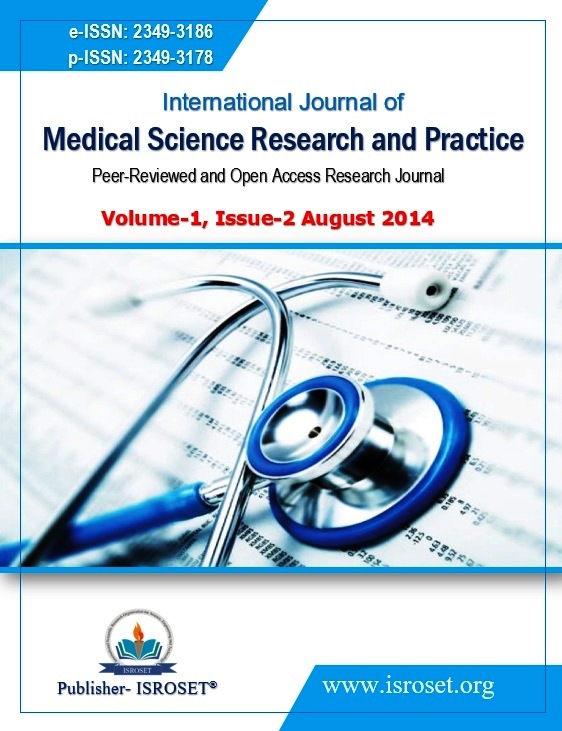Incidence of placenta previa in cesarean section
Keywords:
Placenta Previa, Adherent Placenta, Cesarean sectionAbstract
Aim-To study the incidence of placenta previa in previous cesarean section and compare it with incidence of placenta previa in women with no prior cesarean section.
Background- There is an evident literature support which suggest that the chances of placenta previa are not only more in patients who had a previous history of cesarean section but the chances also increases with the number of cesarean section in past. The overall incidence of placenta previa is 0.2-0.5% in western studies. It may be more in Indian population. As there were not many studies on this important topic from Indian subcontinent.
Material Methods-Total 484 patients with history of previous Lower Segment cesarean Section were selected for study purpose. 496 subjects with no previous history of cesarean section were selected for control purpose. Clinical examination and USG was done at 28 weeks to detect placenta previa.
Results-Ten cases of placenta previa were found in the study group and incidence of placenta previa was calculated to be 2% in this group compared to incidence of only 0.6% i.e. 3 cases in control group (p< 0.05). Also the chances of finding placenta being morbidly adherent were increased in the study group as we found 2 cases of placenta increta and 3 cases of placenta accreta among these.
Conclusion-Incidence of placenta previa is high in patients with previous cesarean section as well as chances further increases with the successive increase in number of cesarean section in past.
References
Yang Q, Wen SW, Oppenheimer L, Chen XK, Black D, Gao J, Walker MC. Association of caesarean delivery for first birth with placenta previa and placental abruption in second pregnancy. BJOG. 2007; 114(5): 609-13.
Ziadeh SM, Abu-Heija AT, El-Jallad MF. Placental previa and accreta: an analysis of two years experience. J Obstet Gynaecol 1999; 19(6): 584-6.
Cieminski A, Długołecki F. Relationship between placenta previa and maternal age, parity and prior caesarean deliveries. Ginekol Pol. 2005 Apr; 76(4):284-9.
Tuzovic L, Djelmis J, Ilijic M. Obstetric risk factors associated with placenta previa development: casecontrol study. Croat Med J 2003; 44(6): 728-33.
Sumigama S, Itakura A, Ota T, Okada M, Kotani T, Hayakawa H, Yoshi, Lim YK, Kim HS, Chang KH, Lee JP, Ryu HS. Sonographic findings of placental lacunae and the prediction of adherent placenta in women with placenta previa totalis and prior Cesarean section. Ultrasound Obstet Gynecol. 2006; 28(2): 178-82.
Chattopadhyay SK, Kharif H, Sherbeeni MM. Placenta previa and accreta after previous caesarean section. Eur J Obstet Gynecol Reprod Biol. 1993; 52(3): 151-6.
Lydon-Rochelle M, Holt VL, Easterling TR, Martin DP. First-birth caesarean and placental abruption or previa at second birth. Obstet Gynecol 2001; 97(5 Pt 1): 765-9.
Hershkowitz R, Fraser D, Mazor M, Leiberman JR. One or multiple previous caesarean sections are associated with similar increased frequency of placenta previa. Eur J Obstet Gynaecol Reprod Biol 1995; 62(2): 185-8.
Ikechebelu JI, Onwusulu DN. Placenta previa: review of clinical presentation and management in a Nigerian teaching hospital. Niger J Med. 2007; 16(1): 61-4.
Kennare R, Tucker G, Heard A, Chan A. Risks of adverse outcomes in the next birth after a first caesarean delivery. Obstet Gynecol. 2007; 109(2 Pt 1): 270-6. Erratum in: Obstet Gynecol. 2007; 109(5): 1207
Getahun D, Oyelese Y, Salihu HM, Ananth CV. Previous caesarean delivery and risks of placenta previa and placental abruption. Obstet Gynecol 2006; 107(4): 771-8.
Downloads
Published
How to Cite
Issue
Section
License

This work is licensed under a Creative Commons Attribution 4.0 International License.
Authors contributing to this journal agree to publish their articles under the Creative Commons Attribution 4.0 International License, allowing third parties to share their work (copy, distribute, transmit) and to adapt it, under the condition that the authors are given credit and that in the event of reuse or distribution, the terms of this license are made clear.






